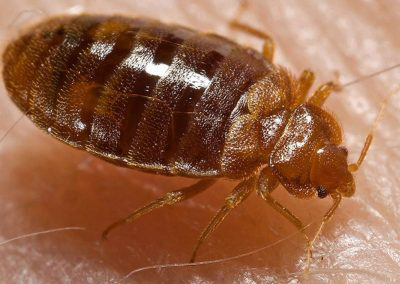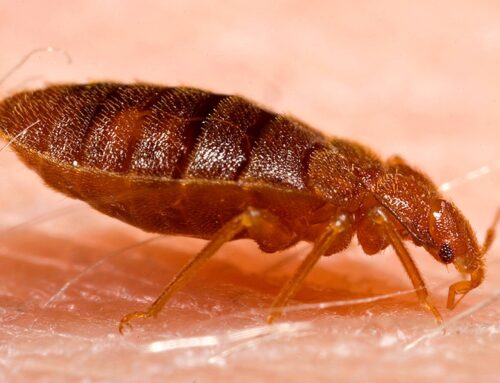Bed bugs are persistent. They hide well, multiply quickly, and can turn a minor problem into a major one before you realize it. The right timing for an inspection is key to stopping bed bugs before they spread.
Here’s what you need to know about when and how often to schedule a bed bug inspection to protect your home or business.

Why Timing Matters
Bed bugs reproduce fast. A single female lays one to two eggs per day and up to 500 in her lifetime. In the right conditions, a small number of bed bugs can become a full-blown infestation in just a few months. Early detection is the best way to keep the problem small and manageable.
If you wait until you see obvious signs, like bites, blood spots, or live bugs, you’re likely already dealing with a larger issue. Inspections catch bed bugs before they become visible or widespread.
When Should You Schedule an Inspection?
There’s no universal answer, but certain situations call for immediate or routine checks:
1. After Travel or Guests
If you’ve recently traveled, especially to hotels or apartments, or had overnight guests, schedule an inspection within a few weeks. Bed bugs often hitch rides in luggage, clothing, or personal items.
2. When Moving In or Out
Before moving into a new home or apartment, or after moving out, an inspection helps catch problems left by previous residents or prevents you from bringing bugs to a new place.
3. If You Notice Early Warning Signs
Don’t wait if you spot:
- Unexplained bites, especially in lines or clusters
- Small dark spots (droppings) on bedding or furniture
- Tiny eggs or shed skins in mattress seams or crevices
- Live or dead bugs, even just one
Schedule an inspection as soon as you notice any of these. Bed bugs are experts at hiding, so even a single bug is a red flag.
4. In Multi-Unit Buildings
Apartments, dorms, and hotels have a higher risk. If bed bugs are found in one unit, inspections should happen in neighboring units immediately and then at regular intervals. Experts recommend every two weeks during an active problem, then monthly for several months after treatment, and at least annually for prevention.
5. As Part of Routine Prevention
If you live in a high-risk area or work in environments where bed bugs are common, schedule inspections at least once a year. For those with regular exposure, monthly checks are smart. If you run a business with high guest turnover, like a hotel or daycare, routine inspections should be part of your maintenance plan.
What Happens During an Inspection?
A thorough inspection checks all the places bed bugs hide. Professionals use tools like flashlights, multi-tools, and sometimes trained detection dogs. They look for live bugs, eggs, shed skins, and droppings.
Inspections may also include:
- Pulling back sheets and mattress seams
- Checking behind headboards and inside furniture joints
- Looking at baseboards, electrical outlets, and wall hangings
- Using interception devices under furniture legs to catch bugs moving around
Inspections are more than a quick glance. They’re systematic and detailed, covering all possible hiding spots.
How Often Should You Re-Inspect?
After treatment or if you’ve had a problem in the past, don’t assume one inspection is enough. Bed bugs can survive months without feeding and may linger in hidden spots.
- Inspect every two weeks during an active infestation and treatment period.
- After treatment, continue monthly inspections for at least six months.
- For ongoing prevention, check at least once a year or more often if you’re at higher risk.
Why Early Inspection Works
Bed bugs are tough to spot when numbers are low. Interceptor traps and regular visual checks help, but professionals have the experience and tools to find bugs early.
- Catches infestations before they spread
- Makes treatment easier and less disruptive
- Reduces the chance of bugs spreading to neighbors or other rooms
- Saves money by avoiding major treatments
Tips to Reduce Bed Bug Risk Between Inspections
While inspections are vital, daily habits help too:
- Reduce clutter to limit hiding spots
- Use mattress and box spring encasements
- Regularly wash and dry bedding on high heat
- Seal cracks and gaps in walls, baseboards, and furniture
- Keep beds and furniture slightly away from walls
- Use interceptor traps under the bed and furniture legs
These steps make it harder for bed bugs to hide and easier to spot them early.
When Should Businesses Schedule Inspections?
Hotels, daycares, and other businesses with lots of visitors need a proactive approach. Schedule inspections:
- After any guest or staff report of bites or sightings
- In all rooms or units adjacent to a confirmed infestation
- At least once a year, as a preventive measure
- More frequently in high-turnover seasons or after known outbreaks
Train staff to spot signs and report them right away. Keep records of inspections and findings for accountability.
Don’t Wait, Act Early
The sooner you schedule a bed bug inspection with a bed bug exterminator, the better your chances of avoiding a costly, stressful infestation. Whether you’ve seen signs, had recent exposure, or just want peace of mind, early and regular inspections are your best defense.





